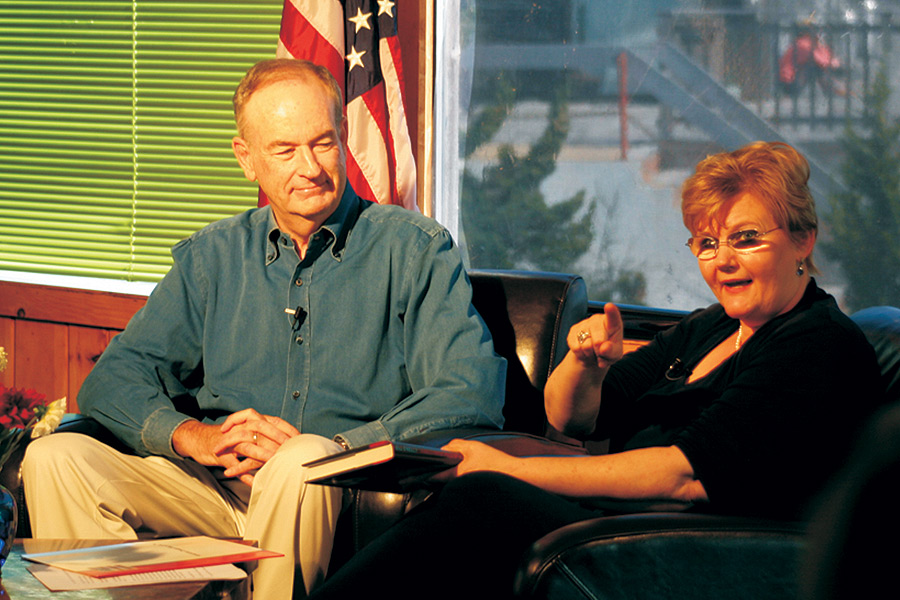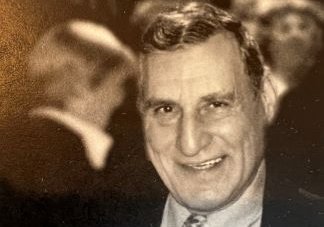War Zone: Local Video Returns to Haunt Bill O'Reilly – Or Not

During the last two weeks, Fox News Channel commentator Bill O’Reilly has been accused of lying about his experiences during the Falklands War. It’s an important issue because of what happened to Brian Williams of NBC a few weeks earlier. Williams was caught in some lies. He is now relieved of his job on NBC Nightly News without pay for six months, a suspension that some call “being fired—light.”
It is my belief that exaggerations can come from the active imagination of men scared out of their wits who have come to believe others won’t think what they’d been through would be bad enough to scare them out of their wits, so they pump up the danger further each time they tell the story so the triumph seems worth it.
It shouldn’t happen with news reporters, though.
In the case of Bill O’Reilly, evidence about one of his supposed lies comes from an interview he gave to Ingrid Lemme, the former PR manager at Gurney’s Inn, in a 2009 TV interview on her American Dream Show. A clip from Gurney’s was shown by Mother Jones in a story entitled BILL O’REILLY HAS HIS OWN BRIAN WILLIAMS PROBLEM, and it’s now been seen millions of times, if you count all the clips of it that have been picked up by other outlets and on social media. I watched the clip from this interview as it appears on the Mother Jones website.
O’Reilly relates that he has covered four wars—El Salvador, the Falklands, Israel and Northern Ireland.
“…at times dangerous?” Ingrid asks.
“Yeah, I almost got killed a couple of times.”
“Is there one situation in particular that you remember?”
“I was there [covering the Falklands War], watching this from about 50 feet away from where the army was shooting…”
O’Reilly notes that in this situation, he was on his own. No American soldiers were there to step in if there were trouble.
“Anyway, when the riots broke out, my shooter, my photographer, got run over by the crowd, he got trampled by the crowd, and the camera went flying. I saved the tape, because it was an unbelievable tape, but I dragged him off the street because he’s bleeding from the ear—he had hit his head on the concrete—so I’m dragging him off the street with one hand, I’ve got the tape in the other hand, the sound man is trying to save the camera because CBS was not going to be happy to lose a camera that expensive, and then the army comes running down and the guy points the M-16 at [us] and I’m going periodista no disparar which means ‘journalists—don’t shoot.’ I said ‘por favor’—please don’t shoot.” And there is laughter from the audience off-camera.
At this point, O’Reilly digresses and talks about how he had been told by a Jesuit priest in El Salvador—about a dozen nuns had just been killed and O’Reilly had gotten there right after that, he says—that in South America and other parts of the world if ever confronted by soldiers who tell you to get down on your knees, don’t do it. You lose face when you do that. They shoot you in the back of the head. That’s what happened to reporter Bill Stewart in Nicaragua, O’Reilly says.
“…and I looked that guy in they eye, the Argentine soldier, and he must have been about 17, he was a kid, and I looked him in the eye and [said] very slowly, periodista no disparar por favor senor and then I pointed to my cameraman who was South American, I pointed to him—you know, the guy’s bleeding—because I was obviously helping him, and the guy lowered his gun and then went away, but he could have easily wiped us off the face of the earth.”
O’Reilly makes the motion of an invisible rifle being lowered as he tells this story.
Mother Jones trumpets the problem. “[O’Reilly’s] even claiming he acted heroically in a war zone that he apparently never set foot in,” they write.
No American reporters were allowed in the Falkland Islands during the war. An American war correspondent who was there in Argentina says O’Reilly was in Buenos Aires in a comfortable hotel, and not in a war zone. There was a demonstration in Buenos Aires, yes. That’s all he saw.
Now even Dan’s Papers has received mail from people who want O’Reilly taken down because of this. We’ve all seen the proof, they tell us. He was on the Falkland Islands? Liar. What more does anybody need?
I looked into this. And it depends what part of the tape you watch. Fact is that O’Reilly, earlier in this interview at Gurney’s Inn shown on Mother Jones, clearly states he is covering fighting in Buenos Aires in front of the Presidential Palace. He’s not referring to the Islands at all.
“Yeah, when the Argentines surrendered to the British, there were riots in the streets of Buenos Aires….and I was out there pretty much by myself because the other CBS News correspondents were hiding in the hotel. I said…you gotta get out and cover the story, which I did, but when the riots broke out in the Casa Rosada, that’s where the Presidential Palace is, people were kind of storming the Presidential Palace because they were so angry that they had lost face, that they had lost to the British. There must have been five or six thousand people. And the army was standing between the people and the Presidential Palace. And…here in the United States we would use tear gas and rubber bullets—they were doing real bullets, they were just gunning these people down, shooting them down on the street.”
Interestingly, Mother Jones shows a clip and all is relatively peaceful.
The proof was in the pudding. You can watch the full clip of the fighting if you want, including what Mother Jones failed to show. It was provided by CBS one week after the original Mother Jones story. And wow, you should see all the police firing their guns, pulling people into trucks, all the smoke and fire, people on the ground and so forth and so on. O’Reilly could be forgiven for considering he was in a war zone. It sure looks like one. And the Argentines had refused to say hostilities were at an end.
“The fighting in the Falklands is over,” says CBS correspondent Dan Rather over a clip of all the shooting on the streets. “But there is new fighting on the streets of Buenos Aires.”
CBS new reporter Charles Gomez says, “As the mob grew to 10,000 they broke through police lines, pelting officers with coins and garbage. The police responded using tear-gas guns and shotguns firing plastic bullets. An unknown number of demonstrators were injured…”
It would appear that the correspondents who were watching the demonstration out the windows of their hotels and saying it wasn’t violent were looking down the wrong street.
So, the question is, is violence in Buenos Aires on the day violence ends on the islands a “war zone?” It’s at least debatable. I would think if I saw what was on that footage, I would say yes.
The war was ten weeks long. There were about 15,000 soldiers involved, and the fighting on land was all on the islands, two tiny specks inhabited by 1,200 Englishmen about 400 miles out in the ocean off the Argentine coast. But there was also action at sea. Half a dozen warships were sunk, some near other islands. About 120 jet fighters, 100 of which were Argentine taking off from airfields on the mainland, fought one another in the air with missiles and rockets. About a dozen of those were shot down. It was a fierce, short war in which about 900 people died. And the fighting in Buenos Aires at the end was enough to bring the government down. How many were killed or injured? We’ll never know. The government refused to release the information.
Bill O’Reilly has said, since the accusations, that absolutely everything he’s said was true. And Fox is backing him. He’s dubbed one of his fellow reporters in Buenos Aires, a detractor, “Room Service Eric.” And his ratings
have soared.
So I was thinking, well, we’ve got to give Bill O’Reilly a pass on this one.
But then I watched a compilation of videos of him, including the Montauk interview, telling his Falklands story—the compilation editors were leaving some video clips in and others out—and here’s what he said on his own show, The O’Reilly Factor, when talking to Boston Globe photographer John Tlumacki after the Boston Marathon bombing.
“Because I was in a situation, one time, in a war zone in Argentina, in the Falklands, where my photographer got run down and then hit his head and was bleeding from the ear on the concrete. And the army was chasing us. I had to make a decision. And I dragged him off…”
In a war zone in Argentina in the Falklands? That’s what he said! I take back that pass.
What these war zone reporters need is their own VFW hall where they can tell their stories. What happens at the VFW stays at the VFW.



